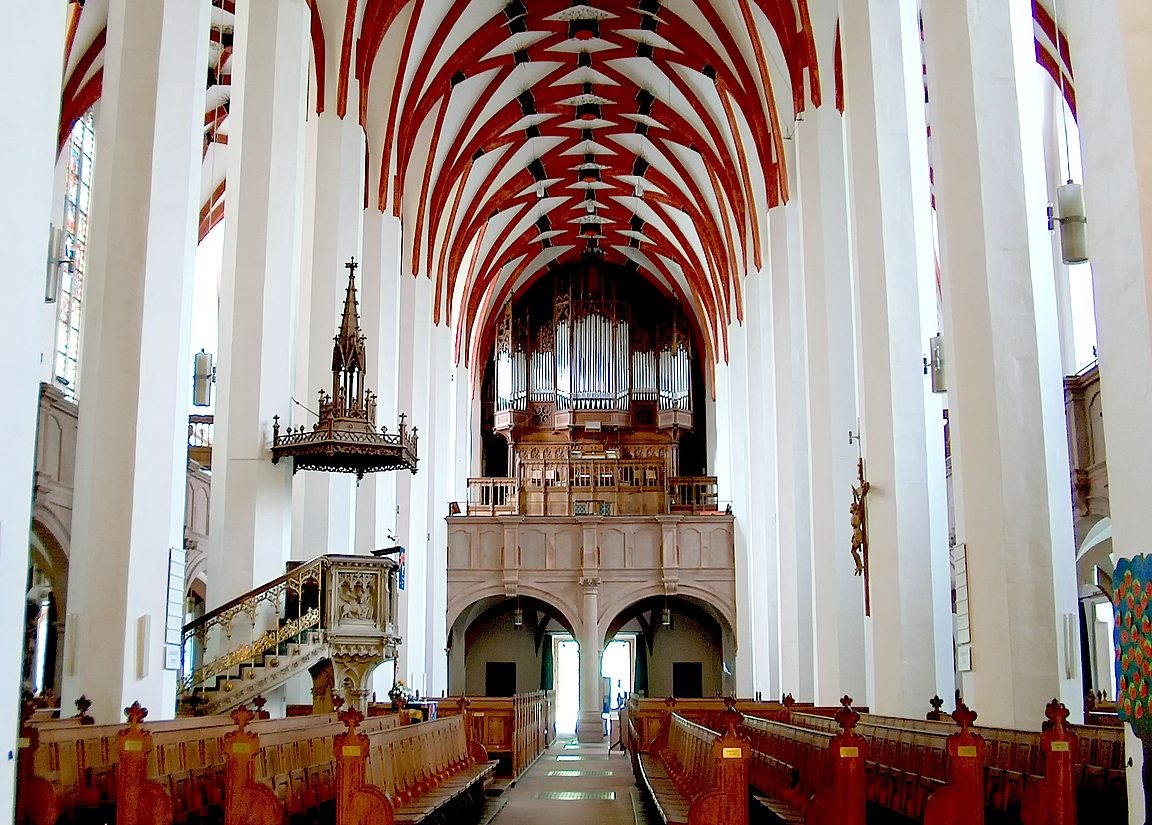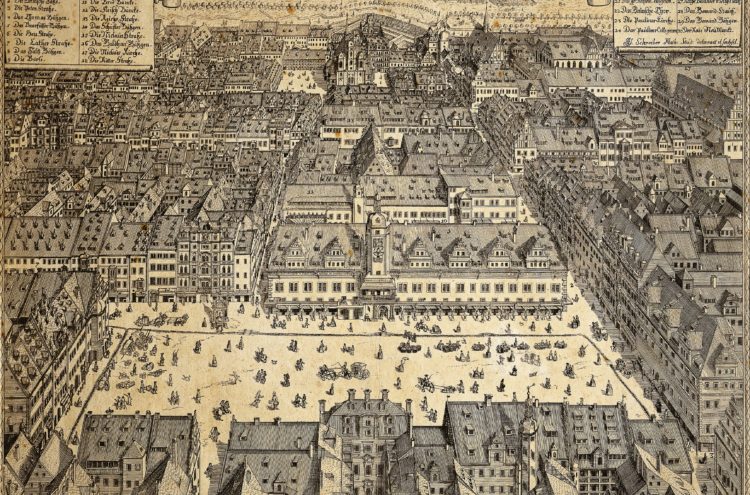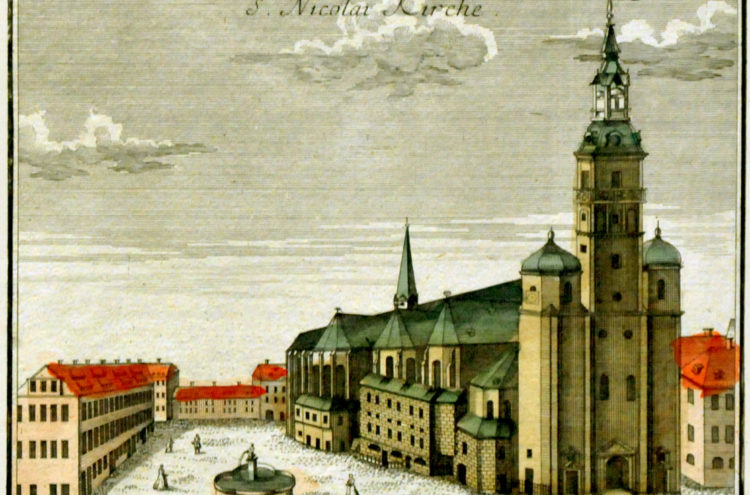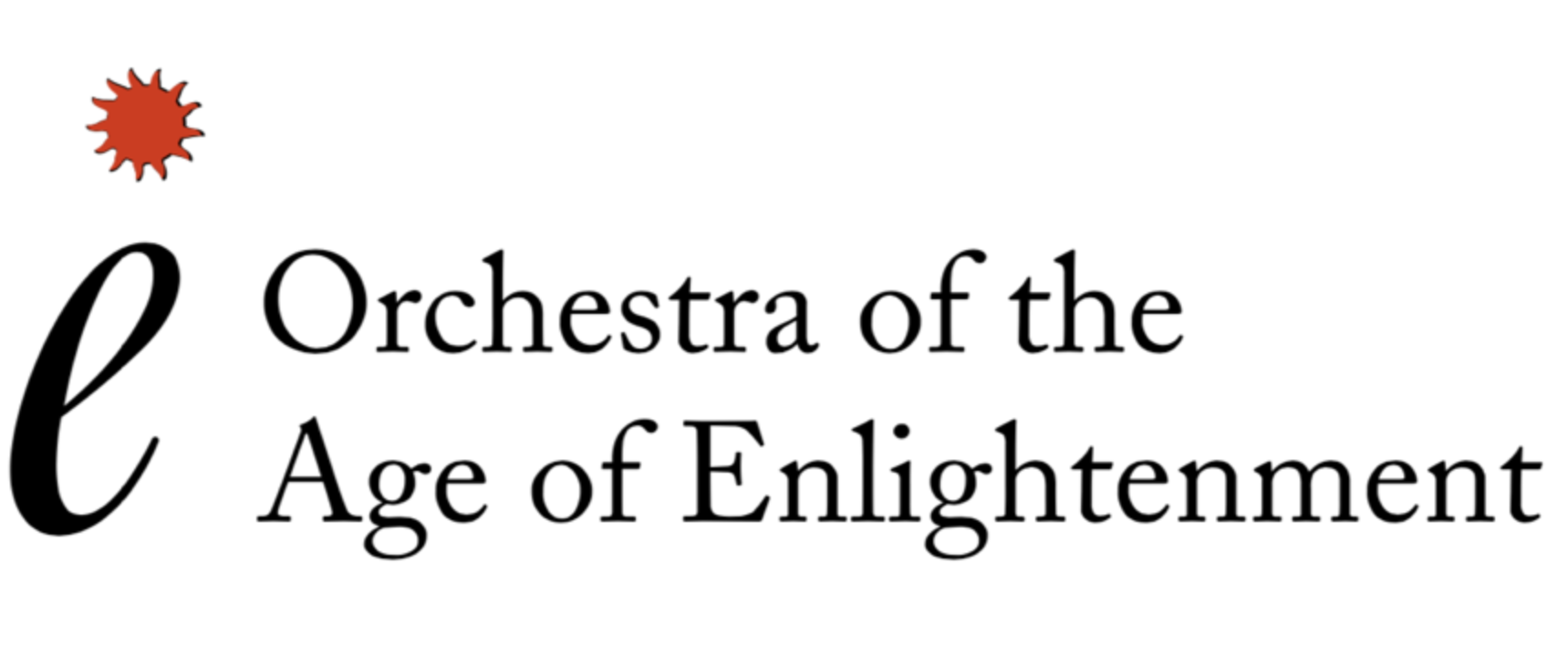Resurrecting Bach’s Easter Oratorio 27 February 2024
 St. Thomas' Church, Leipzig en:User:Zarafa, Public domain, via Wikimedia Commons
St. Thomas' Church, Leipzig en:User:Zarafa, Public domain, via Wikimedia Commons
Anyone who has experienced the drama of Holy Week services – the immersive theatricality of Palm Sunday, Maundy Thursday, Good Friday and Holy Saturday – will know that Easter Sunday can feel (whisper it) a little less exciting by comparison. Theologically, it is the climax: Christ is risen. But the concept of the resurrection is hard for us as human beings to relate to – we may engage with it cerebrally and spiritually, but it can seem remote compared with the visceral and emotional gut-punch of the Passion story.
Bach’s Easter Oratorio has sometimes suffered from the same contrast: the intense human suffering of the Passion accounts famously inspired his extraordinarily moving St John and St Matthew Passions, next to which the Easter Oratorio has sometimes, unjustly, been regarded as a poor relation. This is not helped by the fact that the Easter work is one of only three oratorios produced by Bach, and while the Ascension Oratorio is on a similar scale, the six cantatas of the Christmas Oratorio represent an ambitious and dazzling achievement. The Easter Oratorio has therefore been at risk of being eclipsed by its flashier counterparts; Bach a victim of his own success in producing such consistently great music. Yet he draws us into this work by emphasising, as with those other pieces, the human perspective – focusing on the emotions of our protagonists as they hurry to the empty tomb – all the while illuminating the contrasts between Passiontide and Easter, the focal point of the Lutheran liturgical year: light after darkness; profound depth after drama; something other-worldly that we cannot fully grasp but can strive towards; a sense of renewal and, above all, joy.

It was in 1723 that Bach was appointed Director of Music in Leipzig and Cantor of the St Thomas Boys Choir, made up of boys from the city’s Thomasschule and affiliated with the Thomaskirche. Despite an often tense relationship with the Leipzig authorities, Bach remained in the post until his death in 1750. It seems unfathomable now, but the consistory (church council) treated Bach as a nobody; meanwhile he would probably have regarded the appointment as a step down from his previous position in Cöthen, and he had little respect for his new employers.
In 1729, when the school’s headmaster died, grievances about Bach were voiced, and in the following year he retaliated with irritations of his own, specifically relating to the forces required for a decent musical establishment: ‘A well-appointed church music requires vocalists and instrumentalists… Every musical choir should contain at least 3 sopranos, 3 altos, 3 tenors, and as many basses’. He was frustrated by the effect the limitations of his Leipzig forces had on performance standards: ‘… if I should mention the music of the Holy Days (on which I must supply both the principal churches with music), the deficiency of indispensable players will show even more clearly’.
"A well-appointed church music requires vocalists and instrumentalists... Every musical choir should contain at least 3 sopranos, 3 altos, 3 tenors, and as many basses... if I should mention the music of the Holy Days (on which I must supply both the principal churches with music), the deficiency of indispensable players will show even more clearly."
Bach also lamented the lack of flexibility in adapting to musical innovations: ‘… the state of music is quite different from what it was, since our artistry has increased very much and the taste has changed astonishingly, and accordingly the former style of music no longer seems to please our ears, considerable help is therefore all the more needed to choose and appoint such musicians as will satisfy the present musical taste, master the new kinds of music, and thus be in a position to do justice to the composer and his work.’
An early illustration of this friction between Bach and the authorities came in 1724 – the year before he wrote the music that would be used in the Easter Oratorio – when he composed his St John Passion for the Good Friday vespers, working on the assumption that the work would be performed in the Thomaskirche. The Leipzig consistory decreed that the work be performed at another Leipzig church, the Nicholaikirche, as Passion performances alternated between these two churches each year. Bach only agreed to comply when his requests – that more room be made in the choir loft of the Nicholaikirche, and its harpsichord repaired – were met. Bach was asserting his authority while ensuring that his music be performed in the best possible circumstances.
Despite, or perhaps because of these frustrations – his rather stubborn nature seems to have thrived under pressure – Bach’s output in Leipzig was hugely fruitful, including an eye-watering number of cantatas. These he wrote for Sunday services and for holy days; a phenomenal task on its own, but when one adds his other teaching, composing and performing duties it’s a wonder he found time to eat and sleep.

"... the state of music is quite different from what it was, since our artistry has increased very much and the taste has changed astonishingly, and accordingly the former style of music no longer seems to please our ears, considerable help is therefore all the more needed to choose and appoint such musicians as will satisfy the present musical taste, master the new kinds of music, and thus be in a position to do justice to the composer and his work."
The Easter Oratorio began life as a secular birthday cantata, in this case dating from February 1725 and known as the Shepherd’s Cantata on account of its central characters, four shepherds – two women, two men. The work’s full title is Entfliehet, verschwindet, entweichet, ihr Sorgen (‘Fly, vanish, flee, O worries’) BWV 249a, and it was written for the birthday of Christian, Duke of Saxe-Weissenfals. The music is mostly lost, but the text was by Bach’s regular collaborator Picander (pseudonym of Christian Friedrich Henrici), who may even have presented Bach with the sacred text of the Easter cantata at the same time as the secular poem, so that Bach could get two uses out of his composition; Picander was well aware of the composer’s need to multitask. Of his own contribution to Bach’s output, he wrote modestly in 1728: ‘I flatter myself that the lack of poetic charm may be compensated for by the loveliness of the music of our incomparable Kapellmeister Bach, and that these songs may be sung in the main churches of our pious Leipzig.’
Bach’s Easter cantata was first performed on 1 April 1725 under the name Kommt, gehet und eilet. It wasn’t until the mid-1730s that he became really interested in the concept of oratorios, revising the Easter cantata in 1738 by expanding and rescoring it to create the Easter Oratorio, alongside the oratorios for Christmas and Ascension. In 1734 Bach had attended the opera in Dresden, and it seems likely that he came away from that experience wanting to write something operatic himself – but as his circumstances in Leipzig would not have allowed it, he channelled that inspiration into opera’s sacred counterpart, the oratorio, by producing these three works.
Unusually, Bach would hear the Easter piece performed several times during his lifetime, clearly prizing the music highly. He made further revisions between 1743 and 1746, including the expansion of the opening duet into four-part chorus. The last of these performances was in 1749, just days after his final version of the St John Passion. Changes to the Easter Oratorio included the refinement of the scoring, such as the addition of the expressive transverse flute; Bach may have been making the most of the talents of Leipzig’s Collegium Musicum instrumentalists. He also formalised the work by removing the characters’ names from the score so that it became a work for soloists, chorus and orchestra, in keeping with the traditions of the oratorio.His intention was to play down the theatrical nature of the original work to create a more meditative account in which human reflection on the Easter story is central.
Hear us perform the Easter Oratorio at the Southbank Centre on 27 March.

